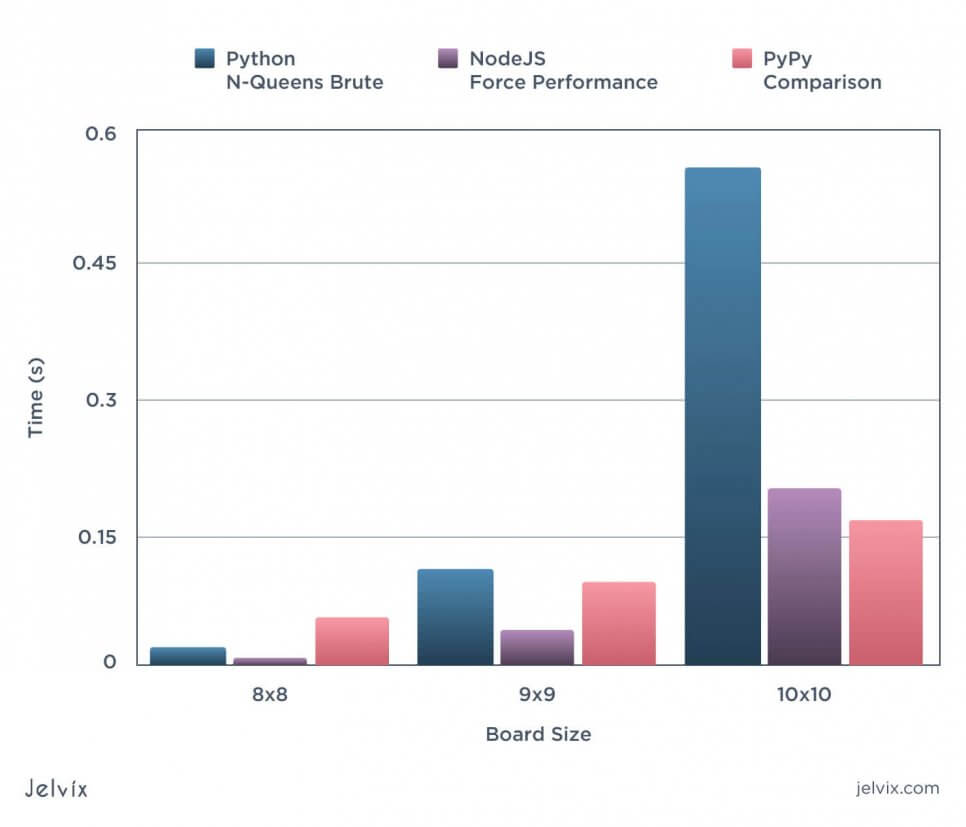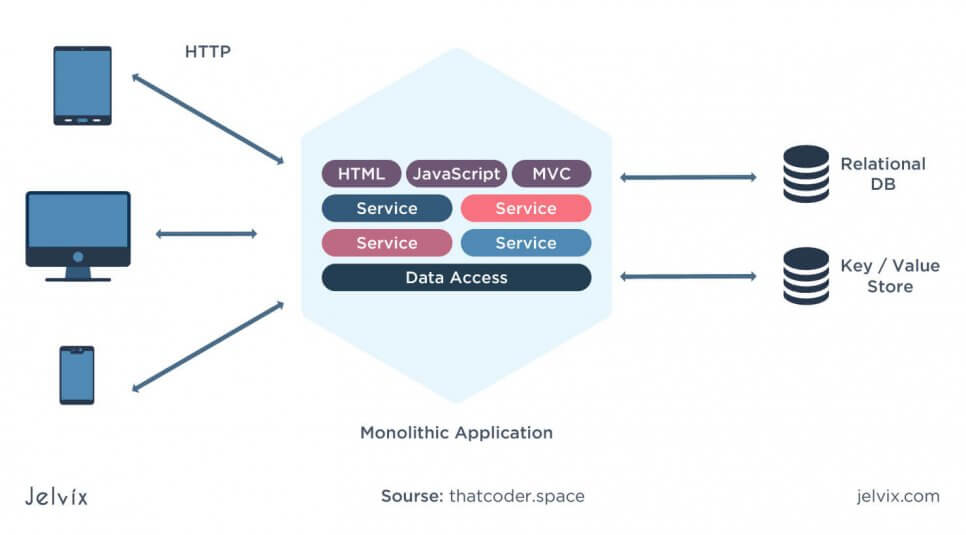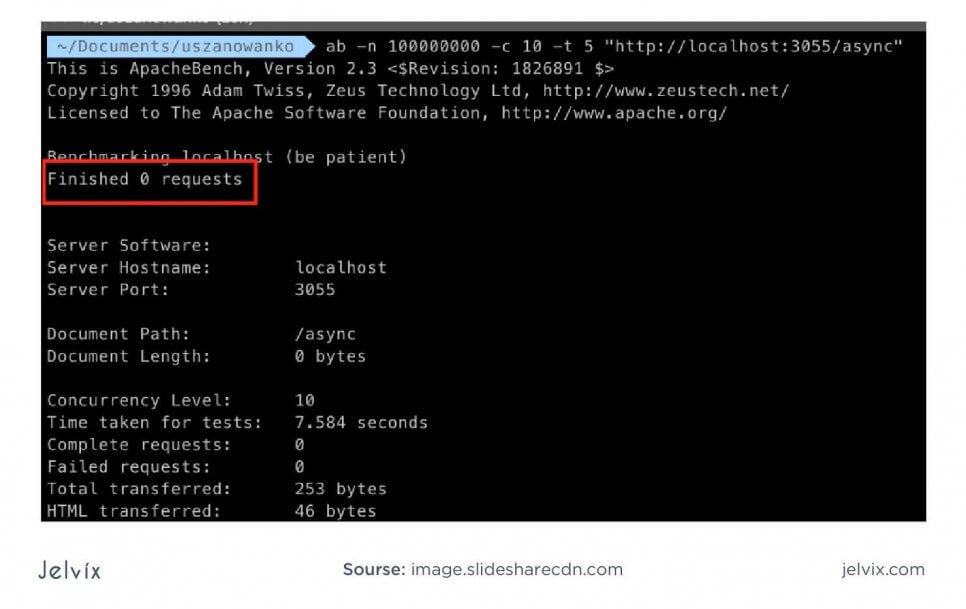When choosing a programming language for backend development, you need to make a lot of decisions upfront. The main problem with choosing a backend tech stack is that it implies your product’s in-depth knowledge. Your choice determines how the product will operate, scale, and fulfill user requests.
This is why, despite having years of experience in backend development, even now, we conduct thorough research when it comes to choosing backend development tools. One of the most common dilemmas is the choice between Python vs Node.js. Both options are tremendously popular, and both have their DOs and DON’Ts.
In this article, we will share our opinion on Python vs Nodejs development. First, we’ll compare their standalone advantages and drawbacks, and then put them side-by-side for exact comparison by crucial criteria.
Criteria for Choosing Between Node.js vs. Python
When choosing a backend language for the project, it’s best to define the expectations right away. When we choose the tech stack for our clients, we usually focus on the following criteria.
What kind of project are we dealing with? The project types range from a business app, SaaS, or computing app to data-based software, messengers, social media, and others. It defines the nature and the intensity of backend operations.
What kind of product do we expect to deliver? Here, we analyze the focus of the software. Is it a data-heavy app or an interface-focused program? Is its functionality mainly static or interactive? To get the answers, we analyze the competitors, the market, and users’ expectations.
What is the project’s reach? When we choose a backend stack, it’s essential to understand what kind of load we will be dealing with – local, nationwide, or international projects. The more significant the project’s geographical reach is, the more careful we have to choose architectural and tech solutions.
What resources do we currently have? What skill sets do other team members possess? What technologies have they previously worked with?
What is the situation on the market? We check the availability of experts in the chosen technology. We want to have enough choice to be sure that we won’t face replacing or adding a new developer along the way.
What are our main performance criteria? No backend tool is perfect. Ideally, we want high speed, security, interactivity, and responsiveness, but no option delivers all of them perfectly. We should pick which of those are higher on the priority list and choose a tool that focuses on these characteristics.
Now, let’s get into analyzing Python vs Node in-depth, examining their advantages, drawbacks, characteristics, and use cases.
Python: Intro and Statistics
Python is an object-oriented, dynamic language known for its simple, organized syntax and universality. With the growing popularity of Machine Learning and Artificial Intelligence, Python became one of the most requested languages on the market.
One of Python’s main strengths is the support of multiple programming styles – this is what makes it equally well-suited for complex computational projects and simple websites. Let’s take a look at what advantages the language offers for different project types.
Statistics of Python usage
According to JetBrains’ research, most developers who know Python use it as a primary language (about 87% of all asked engineers). About 50% use it together with JavaScript – a fact that shows how common the use of Python for web backend is.
When asked which types of development Python is used for, it turned out that 27% use Python for web development, 28% – for machine learning, about 18% – for data analysis, and an insignificant fraction chose other purposes.
Most importantly, Python remains one of the most popular programming languages in 2023, according to Statista. It’s used by 48% of developers – compare the number to Java’s 33% and PHP’s 20%.
Python’s syntax and ecosystem fit well with the demands of the current development market. Let’s quickly summarize the characteristics that contributed to this overwhelming growth.
Advantages of Python
Statistics clearly show that Python is loved both by developers, business owners, and employees. People who learn Python tend to prefer it over other languages – which is why it’s a go-to primary language for many. We also like Python – and here are five reasons why (although this list could get much longer).
Fast Development and Deployment
Python dynamics and object-oriented syntax allow developers to quickly write complicated code. Packages, add-ons, and libraries provide ready-to-go options for nearly everything – from simple web backends to complex scientific computations (yes, NumPy, we are looking at you).
The universality and support of multiple development approaches make Python suitable for the development of MVPs and prototypes. The benefits are obvious – a shortened time to get on the market, an opportunity to simultaneously support various iterations, and a high percentage of reused code.
Simple Syntax
Python uses fewer code lines than many programming languages and frameworks, including Node.js. It’s not just about code’s size, though – it’s also worded simply. Python allows developers to describe complex concepts in a few code lines.
A distinct characteristic of Python is the frequent use of English keywords rather than mathematical expression. The code is easy to read and understand. Suppose you work with multiple teams. Python is a good idea – because developers can easily pick up on others’ work. Unlike Ruby and Perl, languages that offer many ways to solve the same problem, Python offers the most straightforward solution (usually a single one).
This consistent approach makes it easy to establish code standards and maintain them across the entire product’s lifecycle.
Learn more about the main stages of the product development lifecycle to build a sustainable product.
Large Ecosystem
Perhaps the main reason Python got so popular recently is its ability to respond to multiple development challenges. Even though the ecosystem is pretty old, a constant influx of new packages and add-ons keep Python relevant. For now, it’s one of the best-suited languages for AI, computer vision, machine learning, data science, statistics, and other fields.
Let’s take a look at some of the most popular packages in a Python ecosystem – and it’s just the tip of an iceberg.
Machine learning and deep learning resources
- Scikit-learn – a machine learning library that leverages other Python packages (such as SciPy and NumPy) to help automate data analysis and mining. The library is open-source and free for commercial use. Developers use it to build essential machine learning algorithms (decision tree, random forest, and others).
- Torch – one of the easiest machine learning libraries with a rich ecosystem and simple interface. Notably, it provides stable GPU support and a simple, C-based interface.
- TensorFlow – the most popular open-source library for machine learning. No matter which algorithm you want to build, be it an old or a new one, it likely can be executed with TensorFlow.
Language processing
- NLTK is a natural language toolkit that offers natural language processing, machine learning, verbal parsing, and others. Free templates, resources, and datasets can be integrated into your software’s backend.
- Gensim – a text-processing library that automatically defines the semantic structure of the sentence. It’s useful for preparing text suggestions, corrections, and detecting the meaning of the text.
Web development
- Django is one of the most popular web development frameworks of the market, which is often considered direct competition to Node.js. It’s used by multiple companies like Instagram, Bitbucket, Dropbox, and others.
- Flask – a simple Python-based web development framework. It’s a simpler alternative to Django with less functionality but high-performance speed. Django works well with complex enterprise-level apps, while Flask is an alternative for smaller projects.
Choosing between Django and Flask frameworks for your project development is challenging. An informed decision can help save development costs and get the proper perspective on planning and scalability opportunities.
These are not the only areas covered by Python’s ecosystem. The language is a core for many frameworks and libraries in scientific computing, statistics, and mobile development. It’s one of the universal tools on the market, and the number of possible modifications grows exponentially.
Large Community
Python has been around for a while, so it’s no wonder that a large community could grow around it. Developers and business owners can join Python development communities and use countless Python-based open-source resources and tutorials.
Python developers are highly consolidated in local communities, which makes professional growth and experience exchange easier. Every year, there are hundreds of Python conferences held, together with online meetups. Exclusive communities like PyLadies (a group specifically for female Python developers) help developers prevent burn-out and exchange personal stories.
This might seem like an insignificant advantage at first, but we actually found that having a strong community helps keep developers motivated and willing to learn.
Disadvantages of Python
As a backend tool, Python has many advantages – but it’s by no means perfect. In particular, two issues stand out: lower performance speed and problems with mobile versions.
Lower Performance Speed
If your main goal is a fast performance, Python might not be your best choice. The language is great at handling intensive operations, but they take more time to process. If you need to run multiple concurrent requests, Node.js with its asynchronous input and output, is a better option.
Take a look at this article where a developer compares Node.js, Python, and PyPy (a Python version with a just-in-time compiler) in terms of speed. As you can see from the diagram, Python needs much more time than Node.js and more than a modified version.
So, if your applications will simultaneously handle multiple operations, Python will likely not deliver a satisfactory user experience.
Low Performance Quality in Mobile Versions
On mobile versions, the low-speed performance question is even more of a problem than on desktop. A mobile version of the website can be slower as it is, and if the backend is slow by design, the user experience will take a hit.
Another problem with adapting Python code to mobile is that it doesn’t mix well with native components. Python code doesn’t feel like a truly native one. If we couple the after-effects from a not-so-compatible codebase with low performance, it’s obvious why we would have a performance problem.
Node.js: Intro and Statistics
Node.js is a runtime environment for backend development that is based on JavaScript. It uses Google Chrome’s V8 engine to process server-side operations. Is Node.js a language? Actually, Node.js is a runtime environment that’s based on a language, JavaScript.
Node.js uses asynchronous, event-driven input-output. It means that the runtime environment can process many concurrent requests without waiting for the previous procedure to end.
The main advantage of using Node.js is the possibility to use the same tech stack for frontend and backend. It saves a lot of time in the long-run and makes hiring and onboarding easy.
Statistics on Node.js
According to Statista, Node.js is the most popular development framework worldwide, winning the Node.js vs React competition. About 53% of all developers use Node.js for their projects. The runtime environment is used by Discord, Twitter, Aliexpress, Coursera, and other websites.
Recently, migration to Node.js has become a popular trend due to increasing transformation to the microservice architecture. Netflix and Paypal both chose Node.js to power their microservices. This migration allowed them to shorten the startup time from 40 minutes to merely 1 minute.
Node.js main strong suit is in handling complex concurrent processes. This quality made it one of the most popular tools for backend enterprise development. Large companies choose Node to power their infrastructures because of its proven capacity to handle large workloads quickly.
Let’s take a look at the main advantages of Node.js to determine which types of projects it suits best.
Advantages of Node.js
Node.js has two qualities that set it apart from the competition: a fast performance (arguably the fastest among all backend development tools) and a possibility to use a single stack for the entire web project. Let’s take a more in-depth look at each of them now.
Fast Performance
The main reason for Node’s brilliant performance is the non-blocking input and output. It handles many requests in parallel on a single server. It’s a go-to tool for handling multiple simple operations simultaneously. The spike at the Node’s performance is seen best when the processes don’t go beyond updates or network accesses.
Also, Node.js uses Google Chrome’s V8 engine as a runtime environment to execute JavaScript. The engine uses just-in-time compilation to process JavaScript code and provide instant output quickly. This is what makes Node.js a go-to option for interactive development.
High interactivity and speed make up a great final user experience. This is why Node.js is a top choice for real-time apps, messengers, simple gaming applications, etc.
Full-Stack Development
Full-stack web development is a popular trend – many enterprises (Medium, Airbnb, Paypal, Netflix) switched to Node.js to use JavaScript both on the frontend and the backend.
- Better mutual understanding in the development team. The backend and front-end are connected and cooperate all the time. Moreover, you might not need to have two teams together – a single stack allows reducing the number of developers-to-hire. Cross-functional teams correspond well with Agile principles and allow easy and fast management.
- Saving time and resources by reusing code. Developers can reapply code fragments from front-end to backend and vice versa. It reduces the number of lines, quickly delivers the product to the market, and makes refactoring and maintenance much simpler.
- Access to a large talent pool. JavaScript is one of the most popular languages out there. A skilled front-end engineer can easily learn to work with Node.js since the basic principles are the same.
The possibility to reuse JavaScript across the entire web development project speeds up the delivery and makes communication more transparent. It’s a huge advantage in the long run – when all team members can understand the code well, it’s easy to maintain and refactor.
It’s Great for Microservice Development
Node.js ecosystem has many NPM packages that make it easier for the development team to modularize their architecture and migrate from monoliths. Netflix and Paypal executed a simultaneous migration to Node.js and microservices, and it provided excellent results.
They were able to remove code duplication, organize the architecture, introduce additional functionality, and improve user experience. Node.js, with its ability to process multiple requests, allows working with many services simultaneously.
Disadvantages of Node.js
Node.js strong suits lie in great performance, interactive user experience, and maintenance ease. However, just like Python, it’s not perfect. Let’s take a look at the weaker aspects of the runtime environment.
Node.js is Poor at Processing Large Data Volumes
Unlike Python, which is great in CPU-intensive and data-based tasks, Node.js isn’t well equipped to handle complex operations. Its strong suit is the quick processing of multiple simple requests, but anything complicated creates delays.
Node.js is good at getting multiple inputs -outputs – that includes the operations that fetch data from the server to the user. However, when the process also requires the app to make changes with this data, the Node.js starts experiencing issues – and here’s why:
- Node.js uses a single thread event loop to process requests. When we are talking about fast I/O operations, the tasks are over quickly. But if it’s a computation, Node.js will take a while to get the result. The thread will be blocked, and other operations won’t go through. A task as simple as getting a Fibonacci number can block a line.
- A Node.js vs JavaScript problem. JavaScript is essentially a front-end language that contributes to Node.js low CPU-handling capacities. It doesn’t communicate as smoothly with the hardware and processing units.
Here, a developer entirely failed to perform a complex operation. The attempts to execute the operation took 7 seconds, but the process wasn’t finished. It simply didn’t get through.
Suppose your app has to run complicated operations. Node.js is not a good choice. Of course, there are ways to make Node.js work better even with complex tasks, but generally, the default functionality isn’t equipped well.
Messy Syntax
Node.js isn’t that difficult. The language took a lot of features from other languages, and it follows JS principles wholeheartedly. However, JS is still a front-end language, which inevitably affects the Node’s backend capacities.
The language is based on the NPM modules, allowing developers to extend the built-in functionality and create virtually anything. However, the quality and compatibility of these modules are barely checked by the official team. A module can work well on its own but be incompatible with the rest of the system.
Some NPM modules might be incompatible or require re-setting. This is exactly what has happened here – the NPM not necessarily crashed. It just doesn’t work with old network settings. If you run a big infrastructure, such errors can accumulate and lead to crashing.
So, as a result, Node.js has multiple inconsistent models, often lacks semantic standardization, and is subject to frequent changes. Long-term maintenance, as a result, becomes much more problematic.
Python vs Node.js: Use Cases
Node.js and Python’s areas of application differ quite a lot. Node.js is considered to be the go-to tool for enterprises. Even though Python is generally more used as a server-side language, Node.js is more popular. Once we look at top websites, Node.js becomes a leader – precisely because it fits well the needs of large companies.
As you can see, Node.js (the red one) has fewer use cases, but in some industries – like the Internet and Telecom, it almost catches up with Python (the blue one). Considering that the language itself is used less, penetration rates for the Internet and Telecom, Arts & Entertainment are very high.
As for industries, Node.js is a leader in the Internet and Telecom category, almost catching up to Python. Python leads the way in the Business category because Business sites usually don’t need to be super-fast or process multiple requests.
To understand why these tools’ areas of applications differ, let’s take a look at the most common use cases.
Python Use Cases
Python is a universal language that’s used in projects of different scale and focus. Usually, these are CPU-intensive apps that need to process complex operations. Let’s take a look at the most common examples.
Data science: software that works with data collection and analysis often ends up relying on Python. Apache Spark, Facebook data analysis systems, private and governmental facial, and voice recognition systems use Python as their primary language.
Web development of complex platforms: if a forum has to perform calculations, process a lot of data, and provide analytics, Python is a go-to option. Python often powers web tracking, accounting software, and predictive tools.
2D and 3D GUI: animation and complex graphics can be created with Python’s APIs like Scribus, Maya, Blender, and others.
Scientific software: Python is used in FreeCAD, an application for 3D modeling, analytical software like Abaqus, and others.
Scrapers and parsing software: Python collects data for forecasts and analytics and displays the result in intuitive dashboards.
Testing and development: Python is used to write automated testing frameworks, including one of the most popular ones – Selenium.
Node.js Use Cases
Node.js is popular in enterprise development and microservice development. It’s a go-to stack for real-time websites and interactive platforms. Now, when the standard for responsibility and interactivity is higher than ever, Node.js is gaining increasingly more traction. So, what is Node.js used for?
Streaming applications: the runtime environment has a Native Stream API that allows transmitting content and keeping a steady connection between streams. Thanks to fast I/O processing Node.js is great at creating an uninterrupted streaming environment.
Collaboration platforms: Node.js is a great backend tool for any app that requires input and output from multiple sources simultaneously. When several users are audio- or video conferencing or editing a file simultaneously, Node.js assures real-time updates and error-free processing. Trello is an example of a powerful collaboration platform powered by Node.js.
Single-page applications: SPAs rarely need to perform complicated operations; their priority is interactivity and fast performance. Using a single JS stack allows developers to build a fast, responsive app quickly and on budget.
Real-time messengers: Node.js has multiple APIs and NPMs that allow creating two-side exchanges via a single connection, which is what chat development is based on. It also has add-ons for notification development and real-time server-side updates.
Enterprise applications: Node.js is an excellent option for complex enterprise applications because it allows breaking down the functionality in microservices and executing simple operations instead. You don’t need to perform complex computing anymore – rather than one complex structure, you’ll have multiple simple services instead.
Conclusion
Node.js and Python stacks are great backend tools that offer excellent possibilities to development teams. These opportunities, however, don’t come without sacrifices. Python is excellent at executing complex operations and supporting innovations, but it loses in speed. On the other hand, Node.js is known for its outstanding performance, but it’s not equipped to handle complex operations.
The final choice depends on the characteristics of your project. Hopefully, this article gave you a clear idea of the advantages and disadvantages of both tools, as well as their use cases. If you’d like to proceed with the development or get someone to take an unbiased ok at your project, contact our team. We will analyze your product’s needs and choose the backend tool that meets your business and users’ expectations.
Need a certain developer?
Use our talent pool to fill the expertise gap in your software development.

















